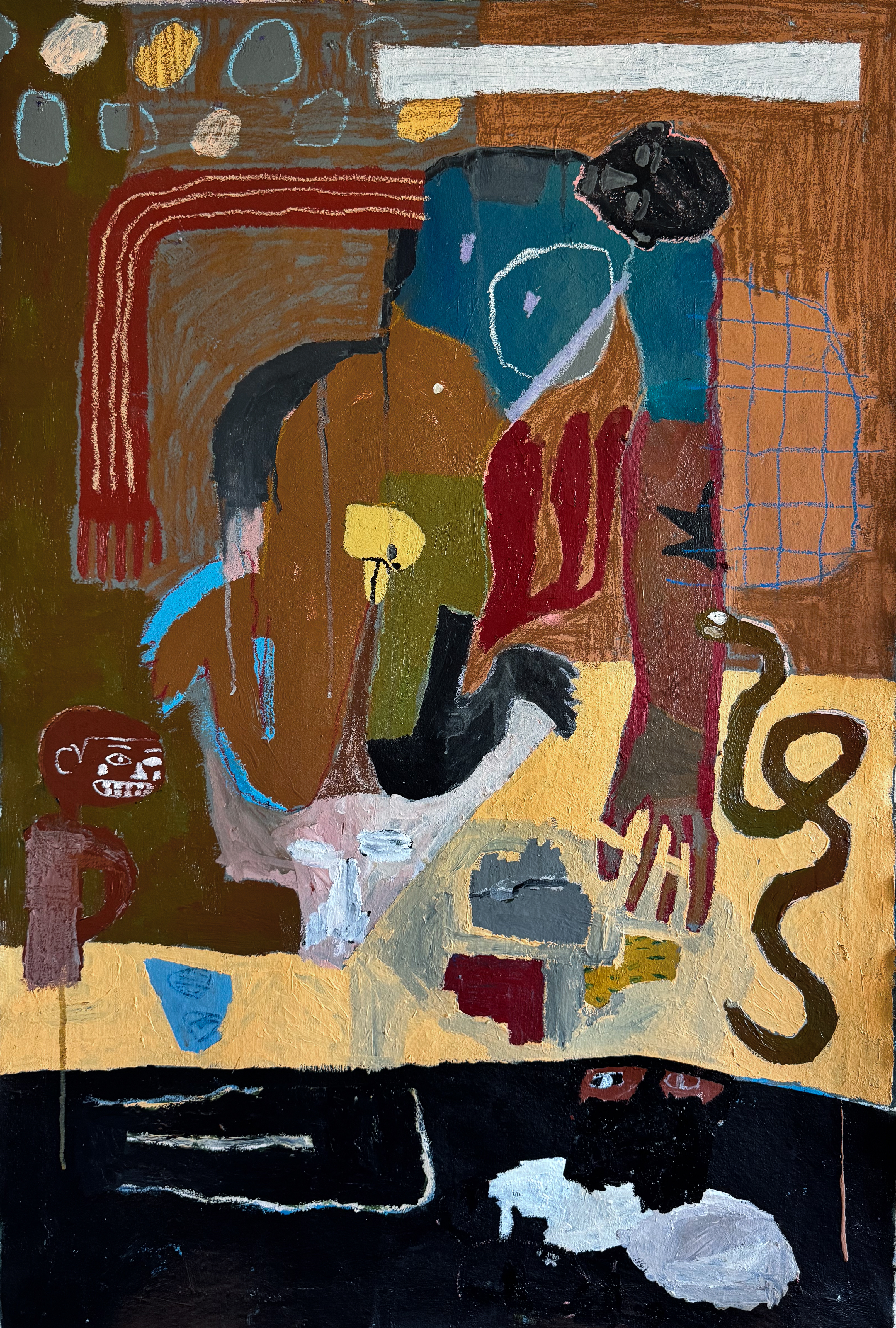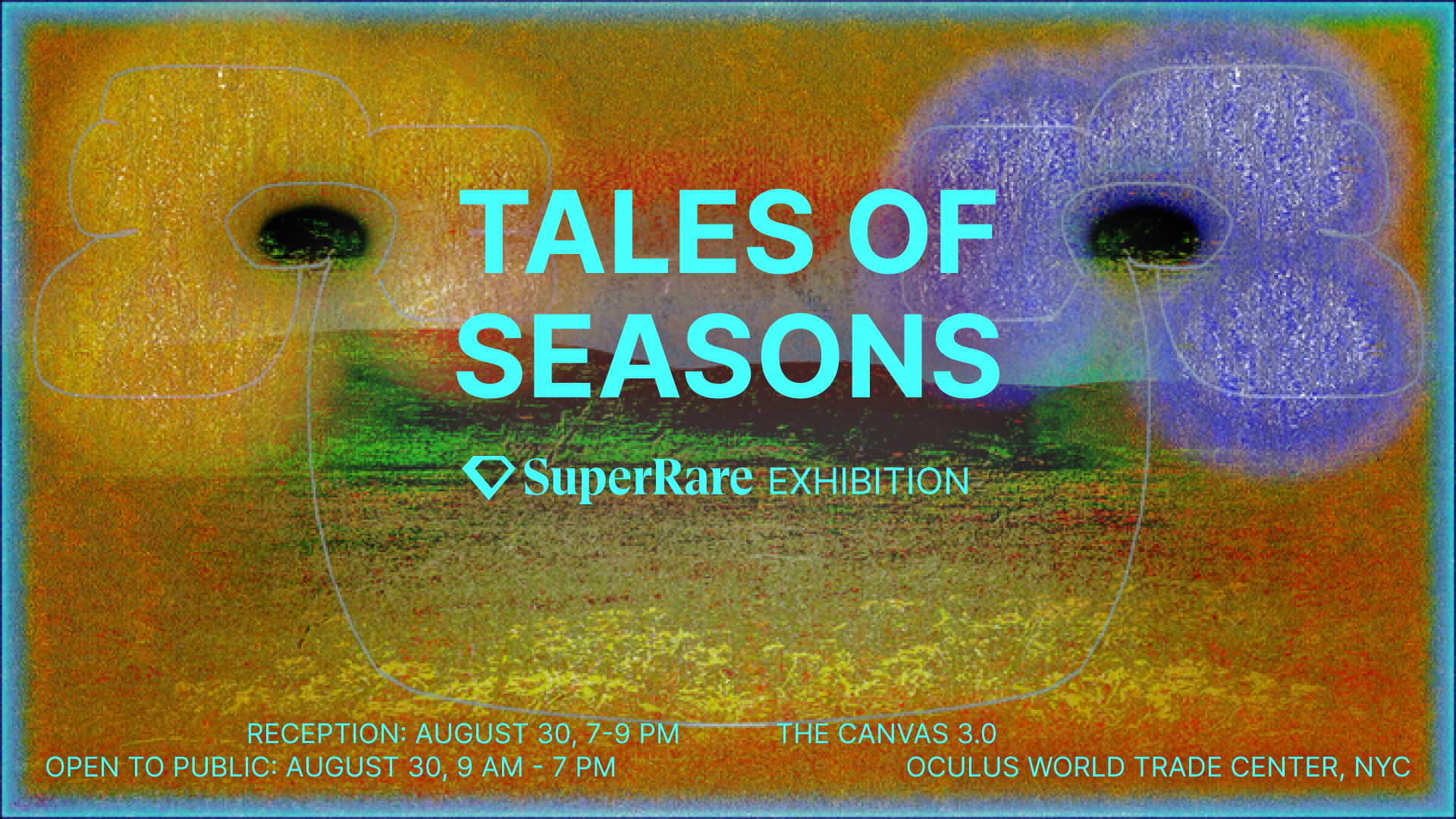About the artist: Olivia Pedi
Olivia Pedigo (aka “liv”, b. 2000) is a Miami native 3D artist, animator, and graphic designer. Before graduating from the University of Florida in 2022 with a degree in Public Relations and a minor in Digital Arts and Sciences, Olivia gained experience as a gallery assistant at the Gainesville Fine Arts Association and as a merchandise designer for the on-campus publication Rowdy Magazine during her time in school.
Over the past four years, Olivia's work has evolved to reflect a dreamscape where comfort and isolation intersect, notably seen in her 'bedroom pieces.' These scenes, devoid of human presence yet filled with character, explore the relationship between individuals and their possessions, with a focus on technology. She draws inspiration from childhood influences like Dr. Seuss and contemporary artists such as Jiayi Li, Nathalie Nguyen, and Hilma af Klint.
In early 2022, Olivia entered the web3 space, venturing into the world of NFTs. Since then, her work has found a home in hundreds of collections. Notable collectors include Terrell Jones, Vincent Van Dough, and Bongdoe. Her journey was highlighted in a feature by It's Nice That, a globally recognized platform for the creative community.
During Miami Art Basel 2023, Delta Airlines commissioned Olivia to create a piece using upcycled plane parts, making her one of six local artists chosen to be elevated by the brand. She chose to work with titanium fan blades, crafting a sculptural installation that was displayed at Delta's Open Air Gallery. The piece was featured in Nylon Magazine, Highsnobiety, The Observer, Airways Magazine
Olivia has exhibited her creations at Lume Studios in New York City, NFTNYC 2023, and SHILLR's mobile gallery.
About the work:
Bed Rot, 2024
About the Artwork: Curator Note
This artwork titled Bed Rot is the artist Olivia Pedi’s latest 1/1 piece and a continuation of the artist’s ongoing “Bedroom” series.
This body of work delves into the nuanced experience of being a digital artist in today's technologically driven society, examining the inherent complexities, comforts, and pressures experienced in an ever evolving hyper productive world. Pedi’s work serves as a commentary more specifically on the societal challenges and expectations placed upon women to remain consistently productive. Themes of isolation, identity, and creativity become significant when considering the imagery and its meanings.
In "Bed Rot," the bedroom offers a glimpse into the artist’s personal story- inviting viewers to introspectively consider their relationship with their own workspace and its connection to comfort. Situating the bedroom as a dynamic and multifaceted landscape—a space that fosters creativity, contemplation, and personal expression. The artwork is rich in symbolic content, featuring objects imbued with personal and emotional significance. Pedi’s inclusion of items such as religious memorabilia, CDs, lottery tickets, empty bottles, and magazine covers serve to bridge the physical and emotional dimensions of our lives. These objects act as conduits, illustrating how our environments shape us and, conversely, the influence between us and our surroundings. This interplay of objects within the domestic sphere highlights the tension between the mundane and the profound, the personal and the universal.
The artist's latest artwork, titled Bed Rot, is born out of this desire for Pedi to depict an honest scene that embraces the mundane and in fact celebrates the need for women to rest, welcoming a relaxed state. "Bed Rot" captures the essence of lying down all day, ignoring the outside world, and as pedi suggests “embracing a form of feminine laziness.” Today women are constantly faced with expectations to remain productive and active. This piece challenges that expectation, highlighting the importance in a space of comfort. The work thus explores a contemporary take on the timeless motif of women in repose, celebrating the necessity of downtime and self-care in an era that increasingly values relentless productivity. By presenting a scene that champions rest, Pedi opens a dialogue about the importance of creating spaces that nurture our mental and emotional health.
This artwork will be available on SuperRare August 1, 2024
Artist Statement:
Bed Rot depicts a serene scene of feminine laziness. Inspired by classic paintings and contemporary works, it celebrates the stillness and unpolished moments, emphasizing that it's okay to exist without constant productivity. The piece highlights the charm in everyday chaos and embraces the mundane. The interplay of light on clutter and the sheen of the bedspread create a visual narrative that transforms disorder into something beautiful. Bed Rot invites viewers to find comfort in their own moments of rest and introspection, reminding us that there is value in simply being and that it's healthy to pause without the relentless drive to be productive. - Olivia Pedi
The interview:
Paloma: You mentioned Dr. Seuss as a childhood influence. Can you elaborate on how his work has impacted your creative vision?
Olivia: I really appreciate how Dr. Seuss created and fully fleshed out his own distinct world, characterized by its fluidity, wobbliness, and daintiness. His blend of whimsy and matter-of-fact storytelling definitely inspires me to invoke a similar sense of simplicity and magic in my own art. I also draw inspiration from other children’s book authors like Shel Silverstein. There’s something incredible about seeing the world through a simpler, more childlike lens—it makes everything more calming, and at the same time, captivating. These books are nostalgic for me, as they remind me of bedtime stories and those fuzzy moments just before falling asleep. In my mind, they exist in a dreamy state, which influences the reminiscent quality and a lot of the callbacks to childhood in my ‘bedroom pieces.’ Overall, these influences encourage me to embrace playfulness in my art while exploring deeper themes like how we look back on and maybe alter our memories.
Paloma: How did your time at the University of Florida shape your approach to 3D art and animation?
Olivia: My time at the University of Florida was definitely a period of discovery and growth for me. When I first got there, I had no idea what I wanted to do with my life or what my passions were. Initially, I chose environmental science as my major almost blindly, but after my first semester, I switched to public relations, still unsure of my future. As a communications major, I took classes on the Adobe Creative Cloud, which sparked my interest in Photoshop, Illustrator, and other editing software. I started creating graphics and posting my progress, and soon my friends saw me as a designer. Realizing my passion for this field, I began exploring 3D art on my own through Blender, learning from YouTube tutorials. By the end of my sophomore year, I knew I wanted to shift towards a creative field. It was too late to change my major, so I picked up a minor in digital arts and sciences. I learned a lot about the foundations of digital culture and the principles of digital visualization, including developments like telecommunications, video games, social media, and even the blockchain. These explorations were pivotal in shaping my approach to 3D art and animation. They influenced me to include technology as an ever-present theme in my work. I began to see it not just as a tool, but a means of self-expression and a translator for my ideas. This perspective inspired me to explore ideas related to our dependent relationship with it and became a cornerstone in my art, where I examine how technology affects our identity, attachment, and sense of ownership.

Paloma: What does your creative process look like? How do you typically approach a new piece or project?

Sources of inspiration
Olivia: My creative process usually starts with just a simple thought, idea, dream, or even question. I spend a lot of time reflecting and contemplating, often just staring at a blank wall and thinking things over. I usually, unintentionally, turn my thoughts into visual schemes mentally before I start creating anything tangible. I typically don't sketch or put anything down on paper. I dive straight into Blender and open a blank file, which is when I start physically creating, working with meshes, compositions, lighting, and materials until everything feels accurate to my original vision. Although, I iterate a lot—there are at least three versions of every piece I've ever created. My mind is constantly racing, so I am always refining and adjusting my work until it aligns with my initial idea, while also embracing the fluidity and changes that come with the process.
Paloma: Can you discuss the influence of contemporary artists like Jiayi Li, Nathalie Nguyen, and Hilma af Klint on your style and technique?
 Jiayi Li, 2021
Jiayi Li, 2021
Olivia: I really appreciate how Jiayi Li, Nathalie Nguyen, and Hilma af Klint are all strong female artists in their respective mediums. They explore mysticism and view the world through a feminine, whimsical perspective, which deeply resonated with me, especially early in my artistic journey. Nathalie Nguyen specifically inspired me to dive into 3D art after I discovered her on Instagram. I was captivated by how she combined 3D graphics with her IRL fashion and style. To me, her work revealed the endless possibilities for blending diverse creative elements and pushing the boundaries of 3D art. On the other hand, Jiayi Li’s work, with its vibrant and bold color schemes, always creates a surreal and electrifying atmosphere. Her use of intense hues and dynamic compositions made me want to evoke a similar sense of energy in my own pieces. Also, her talent for transforming mundane objects into extraordinary visuals motivates me to elevate everyday things into captivating experiences. I find Hilma af Klint incredibly interesting as well because of how early on she pioneered abstract art. Her work in particular speaks to me because of its sense of balance and composition. I love how it captures the natural, often imperfect beauty of things. Her ability to achieve harmony influences how I approach my own compositions, guiding me to create a sense of balance and natural flow, even when I’m intentionally crafting chaos.

The Ten Largest, Group IV No. 2, Childhood 1907 by Hilma Klint
Paloma: Your 'bedroom pieces' are known for their unique blend of comfort and isolation. What inspired you to focus on this theme?
Olivia: My 'bedroom pieces' are inspired simply by the experience of being a digital artist, or more specifically a 'bedroom artist.' It is a lonely existence but a freeing and rewarding one too. Often, being alone is associated with darkness, emptiness, and misunderstanding. I like to challenge that perception and honor the peace, creative freedom, and comfort that solitude can bring. When I first started getting the hang of 3D, I spent a lot of time in my room on the computer, making odes to technology because it was the tool that allowed me to express myself. My bedroom became a sanctuary for these moments of creation, a sacred place where I was able to fluently express my mental scribbles into tangible visuals. As I went deeper into the bedroom theme and our relationship with technology, I naturally began exploring how our other possessions shape our sense of self. This exploration created a dialogue in my work about how our objects dictate our behavior, self-worth, and identity.
 Soft Things and Hard Feelings (2022)
Soft Things and Hard Feelings (2022)
Paloma: How do you select the technology and possessions you depict in your work? What significance do they hold for you specifically?
Olivia: When my mind leads me to specific technology to depict in my work, I often gravitate towards items that look dated or might even seem unattractive to some people. In today’s world where trend cycles are so rapid, I naturally began to present old, yellow-ish, bulky tech in a flattering way in an attempt to make people see it in a different light and help them question how and when we decide the life cycles of objects are over or not. As for other possessions, I tend to include physical objects that often carry significant nonphysical weight and emotion, taking up real space in both our environments and our minds. For example, spirituality in the form of religious memorabilia, memories in the form of CDs, hope in the form of a lottery ticket, desperation in the form of an empty Bacardi bottle, and idols in the form of a 2014 Young Thug magazine cover. These objects create a deeper connection between the physical and emotional dimensions of our lives, highlighting how our possessions influence our sense of self and our experiences. These elements also illustrate how we are a reflection of our environment and vice versa. We exist everywhere and leave traces of ourselves in the world, influencing and being influenced by what we own.
 My Computer Crashed and so did i (2023)
My Computer Crashed and so did i (2023)
Paloma: Your work often explores the relationship between individuals and their possessions. Can you tell me a bit more about what draws you to this particular subject matter?
Olivia: Growing up in a digital age, where our identities have been reduced to social media profiles starting from a young age, has really made me question who we are and what we value. The constant visibility and the pressure to curate our lives for a grid of photos has made me reflect on how we represent ourselves and the impact that rapidly changing trends have on it as well. We often use possessions to show off a version of ourselves, but it raises the question: if our actual selves are not defined by these external objects, but rather by our inner personalities, thoughts, and dreams, how do we express and understand our identity? This tension between our inner beings and the external images we project drives my exploration of the relationship between individuals and their possessions. It challenges us to consider whether the things we own truly reflect who we are, or if they obscure our deeper, more authentic selves.
Paloma: Tell me about this latest 1/1 you are releasing on SuperRare? What inspired this work?
Olivia: "Bed Rot" is inspired by the literal act of lying down all day, ignoring the outside world, and embracing a form of feminine laziness. It is a quiet rebellion against the pressure to be constantly productive. As a digital artist, I spend a lot of time locked away, creating from my bed while shows like "Jersey Shore" and "Love Island" play in the background. There's an inherent guilt associated with this, especially for women and girls, who are often pressured to always be useful, to be pretty, smart, caring, and constantly fighting for their place in society. Sometimes, it's okay and even beneficial to just be. This piece is a love letter to doing nothing and being okay with it. Especially as a creative, I often get so caught up in the drive to be productive that I burn out. "Bed Rot" is a reminder that it's healthy to exist without the constant push to be productive. I drew inspiration from old paintings of women lounging in bed, and the beauty in their relaxed state. I found inspiration in messes and chaos—elements that are inherently ugly but possess a certain charm maybe because of their humble existence. The idea of "dead weight" and how light hitting something wrinkled and crumbled up can create something magical, much like a painting with light beams, heavily influenced this piece.
Paloma: What role does color theory play in your work?
Olivia: For "Bed Rot" in particular, I was drawn towards a soft, almost monochromatic color palette with mostly pinks, oranges, and warm undertones to emphasize a sense of comfort and relaxation. The silky, iridescent bedspread and different colored glasses reflecting and refracting light were also very important to the scene. The random bright streaks of saturated light and color evoke the kind of magic you feel when you're truly alone and comfortable. This use of color highlights the beauty in the mundane and also underscores the theme of embracing laziness without guilt. In my work in general, I gravitate towards pastels, pinks, blues, greens and always warm undertones. These colors build a sense of comfort and nostalgia, often reminiscent of childhood and soft memories.
Paloma: Speaking of the inspiration of this work as an embrace if not a celebration of a woman in a relaxed state, can you share some specific examples of works in history that you may have looked towards as inspiration? For example, this subject matter as a reference to embrace the mundane- a woman in repose. What do you hope the viewer will take away from this piece most?
My Bed, 1999- 2000 by Tracey Emin
Olivia: I drew aesthetic inspiration from classic oil paintings that depict women in solitary moments, bathed in gentle light. For instance, 'Entre dos luces' by Pierre Ribera and "Morning Sun" by Edward Hopper both capture the peacefulness of women in repose, their tranquility highlighted by light and shadow on the sheets. Another significant influence was Tracey Emin's "My Bed." This piece stemmed from a period of depression and introspection where she spent days in bed, surrounded by the clutter of her life, consuming nothing but alcohol. When she looked at the mess that had accumulated, she suddenly realized what she had created. Although her messaging diverges from mine, I deeply admire her raw vulnerability and the unfiltered glimpse into her existence that she shared with the world. Through "Bed Rot," I hope to celebrate all aspects of womanhood, even those that are deemed 'messy' or 'unattractive.' I want to convey that it's okay to simply exist without the relentless drive to be productive. I hope viewers recognize the beauty in these honest, unpolished moments and feel a sense of acceptance and validation in embracing their own periods of stillness and self-reflection.
Morning Sun, 1952 by Edward Hopper
Entre dos luces, by Pierre Ribera
See more of Olivia’s available work with SuperRare here.




